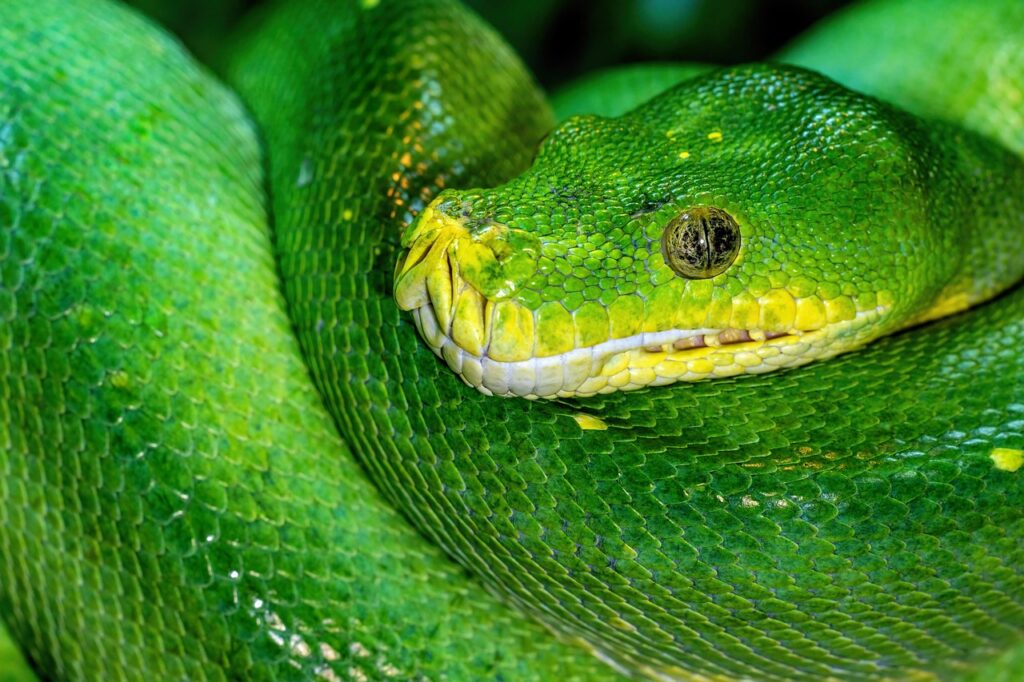When we think of dinosaurs, many of us still picture the scaly behemoths popularized by Jurassic Park. However, paleontological discoveries continue to revolutionize our understanding of these ancient creatures. Among the most fascinating is Anchiornis huxleyi, a small crow-sized dinosaur that lived approximately 160 million years ago during the late Jurassic period. What makes this diminutive dinosaur truly remarkable is not just its feathered body but the spectacular rainbow iridescence those feathers displayed. With exceptionally preserved fossils found in China’s Liaoning Province, Anchiornis provides a crucial window into dinosaur evolution and the origins of birds, challenging our perceptions with every new study.
Discovery and Naming

Anchiornis huxleyi was first described in 2009 based on a specimen discovered in the Tiaojishan Formation of Liaoning Province, China. The genus name “Anchiornis” derives from Greek words meaning “near bird,” highlighting its transitional position between dinosaurs and modern birds. Its species name “huxleyi” honors Thomas Henry Huxley, the British biologist who was among the first to propose a dinosaurian origin for birds in the 19th century. The discovery was particularly significant because it occurred in sediments dated to approximately 160 million years ago, making Anchiornis older than Archaeopteryx, which had previously been considered the earliest bird-like dinosaur. This chronological position gives Anchiornis special importance in understanding the evolution of avian features before the emergence of true birds.
Physical Characteristics
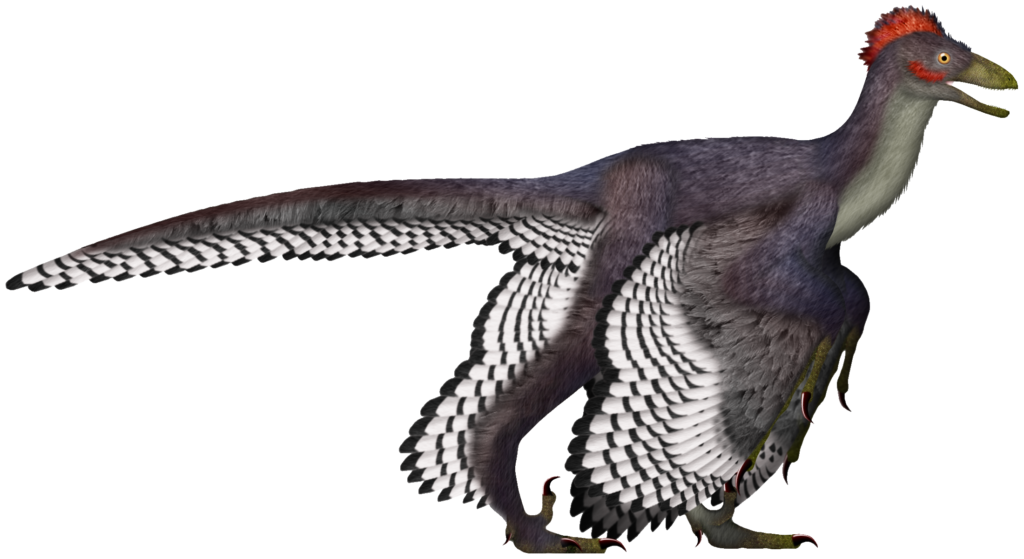
Anchiornis was remarkably small for a dinosaur, measuring only about 34 centimeters (13 inches) in length and weighing around 110 grams (less than a quarter pound)—comparable to a modern crow. It possessed a slender body with long arms and legs, suggesting it was well-adapted for a tree-dwelling lifestyle. Its skull was relatively large in proportion to its body, with a pointed snout filled with small, sharp teeth, indicating a diet likely consisting of insects and other small prey. Perhaps most notably, Anchiornis had extremely long feathers on its limbs, forming wing-like structures on both its arms and legs—a characteristic called “four-winged” that has been found in several other paravian dinosaurs. This feature suggests that flight evolution may have gone through a four-winged phase before the modern bird body plan developed.
Extraordinary Feather Preservation

What makes Anchiornis specimens truly extraordinary is the exceptional preservation of their feathers, revealing details that are rarely found in the fossil record. The fine-grained lake sediments of the Tiaojishan Formation created perfect conditions for preserving even the most delicate structures. Unlike most feathered dinosaur fossils, which only show feather impressions, many Anchiornis specimens preserve actual feather structures down to the microscopic level. Scientists have been able to identify different feather types across its body, including primary feathers, coverts, and contour feathers. This exceptional preservation has allowed researchers to reconstruct the animal’s appearance with unprecedented accuracy, creating some of the most detailed depictions of any dinosaur species. The quality of preservation even extends to the cellular structures within the feathers, providing direct evidence of their coloration and arrangement.
Rainbow Iridescence: A Colorful Discovery

In a groundbreaking 2010 study, researchers analyzed the melanosomes—microscopic pigment-bearing organelles—preserved in Anchiornis feathers, allowing them to determine the actual colors this dinosaur displayed in life. The analysis revealed that Anchiornis had a primarily black body with white feather edges on its wings and legs, creating a striking spangled pattern. Even more remarkably, its crown featured reddish-brown feathers that likely showed iridescent rainbow hues when light struck them from different angles. This iridescence, similar to what we see in modern hummingbirds and starlings, would have created shimmering displays of color as the animal moved. This discovery marked the first time scientists could accurately determine the full-body coloration pattern of any dinosaur, moving dinosaur reconstruction from artistic speculation to scientific visualization based on physical evidence.
Evolutionary Significance
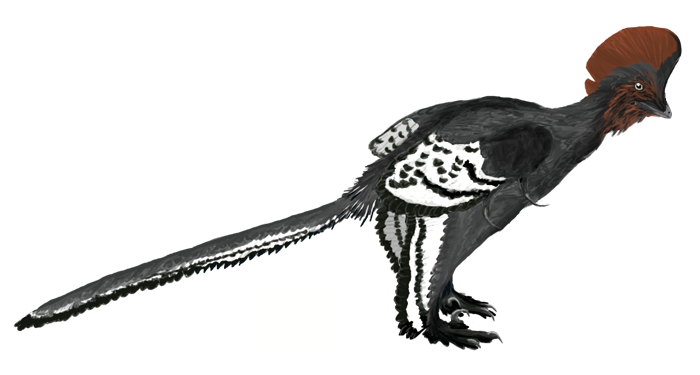
Anchiornis occupies a crucial position in the dinosaur family tree, belonging to the group Paraves, which includes troodontids, dromaeosaurids (like Velociraptor), and avialans (the lineage leading to modern birds). Its mix of primitive and derived features provides important clues about the sequence of evolutionary changes that led to birds. The presence of flight feathers in a dinosaur that predates Archaeopteryx demonstrates that many “bird-like” features evolved earlier than previously thought and for purposes other than flight. Anchiornis possessed feathers similar in structure to those of modern birds, yet it lacked some key adaptations necessary for powered flight, suggesting these feathers initially evolved for other functions such as display, insulation, or possibly gliding. This evidence supports the idea that flight evolved gradually through intermediate stages rather than appearing suddenly in the fossil record.
The Four-Winged Body Plan
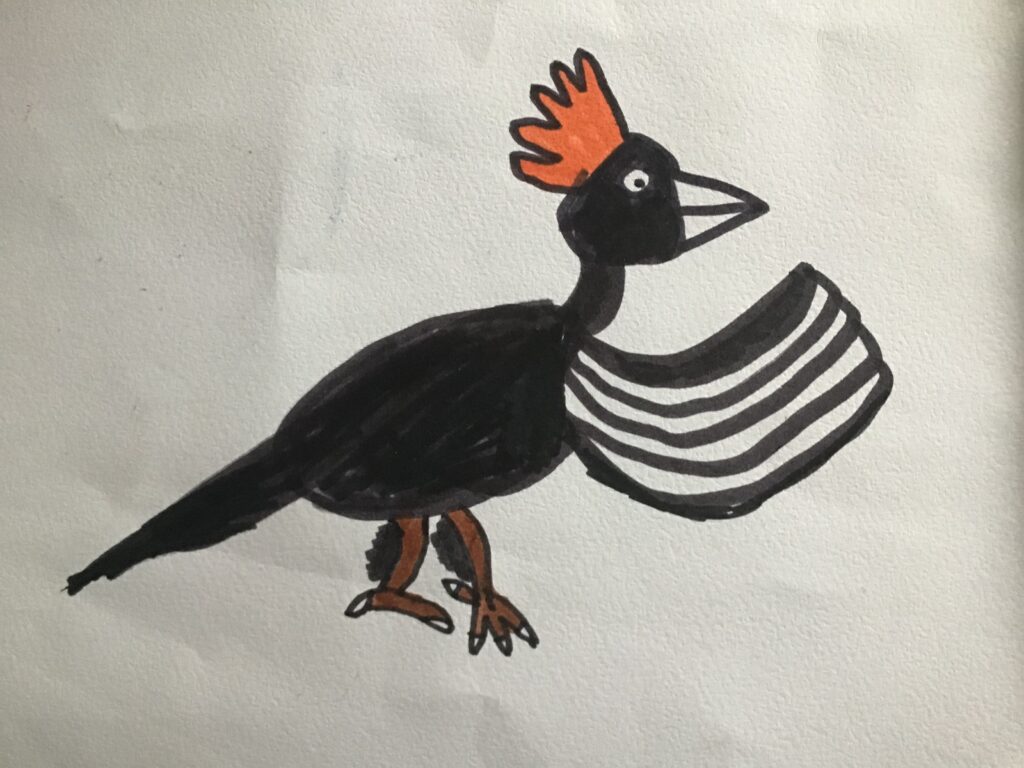
One of Anchiornis’s most distinctive features was its “four-winged” configuration, with long pennaceous feathers on both its arms and legs. This arrangement created four wing-like surfaces that may have played a role in gliding or controlled descent from trees. The leg feathers were particularly long and arranged in a way that would have created a functional airfoil surface, unlike the leg feathers in modern birds, which are typically short and do not contribute to aerodynamics. This four-winged body plan appears to represent an early experimentation in the evolution of flight, preceding the modern bird configuration where wings are restricted to the forelimbs. Studies suggest Anchiornis would not have been capable of the powerful, sustained flight seen in modern birds, but might have been adept at gliding between trees or making short powered flights. This unusual anatomy has forced scientists to reconsider the evolutionary pathway that led to avian flight.
Habitat and Environment
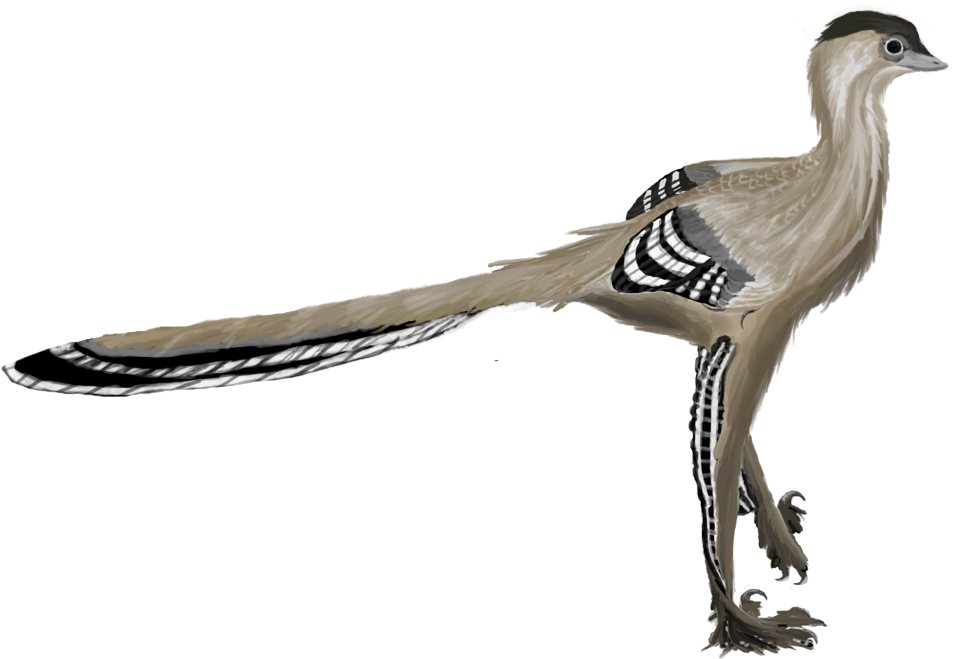
During the Late Jurassic period when Anchiornis lived, its home in what is now northeastern China was a lush, forested environment surrounding ancient lakes. The climate was temperate to subtropical, with distinct seasons and abundant vegetation that supported a diverse ecosystem. These forests were dominated by conifers, ginkgoes, and ancient cycads rather than the flowering plants that would become prevalent later. This environment was periodically affected by volcanic activity, which may have contributed to the exceptional fossil preservation in the region. The numerous lakes in the area created the perfect conditions for fossilization, as animals that died near or in these bodies of water could be quickly covered by fine sediments that prevented decomposition. Anchiornis likely inhabited the forest canopy, using its feathered limbs to move through trees and possibly glide between them in search of prey.
Diet and Hunting Behavior
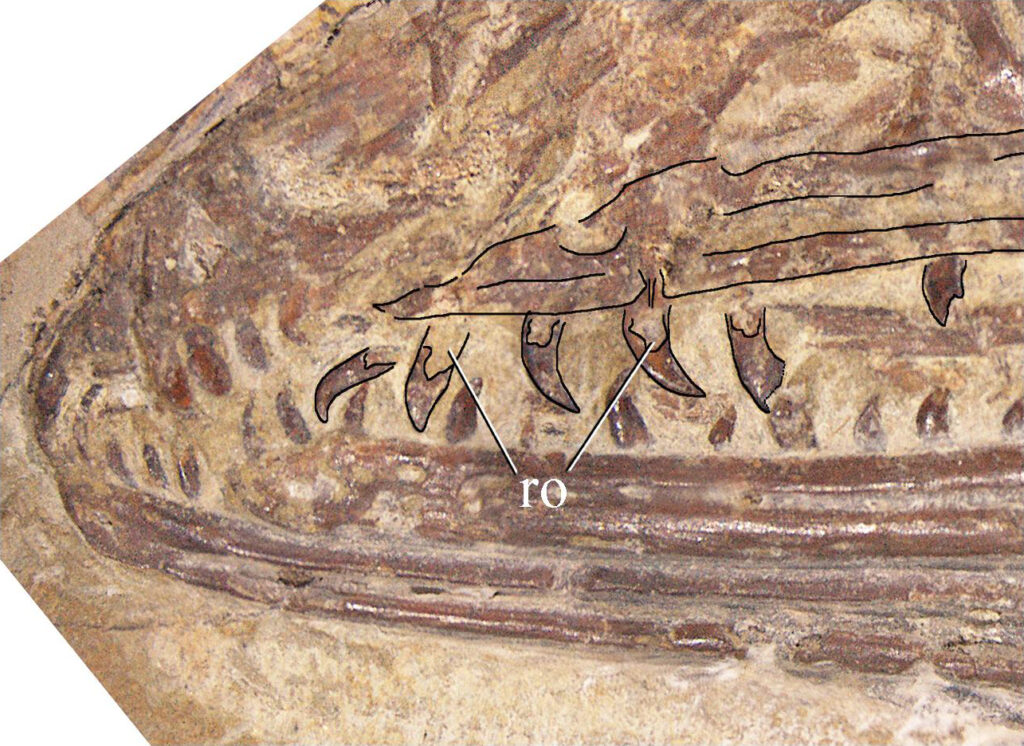
Analysis of Anchiornis’s skull and teeth provides strong clues about its dietary habits. Its jaws were lined with small, sharp teeth ideal for catching and holding small prey. The teeth lack the serrations found in carnivorous dinosaurs that fed on larger animals, suggesting Anchiornis primarily hunted insects, small lizards, mammals, and possibly fish when near water sources. Its large eyes positioned on the sides of its head provided wide-angle vision useful for spotting movement, while its long arms and hands with curved claws would have been effective for grasping prey from branches or the ground. Some researchers hypothesize that Anchiornis may have been an active hunter, using its agility to pursue prey through the forest canopy. Alternatively, it might have employed a more strategic approach, using its colorful plumage as camouflage among dappled forest light to ambush unsuspecting prey from concealed positions.
Social Behavior and Display
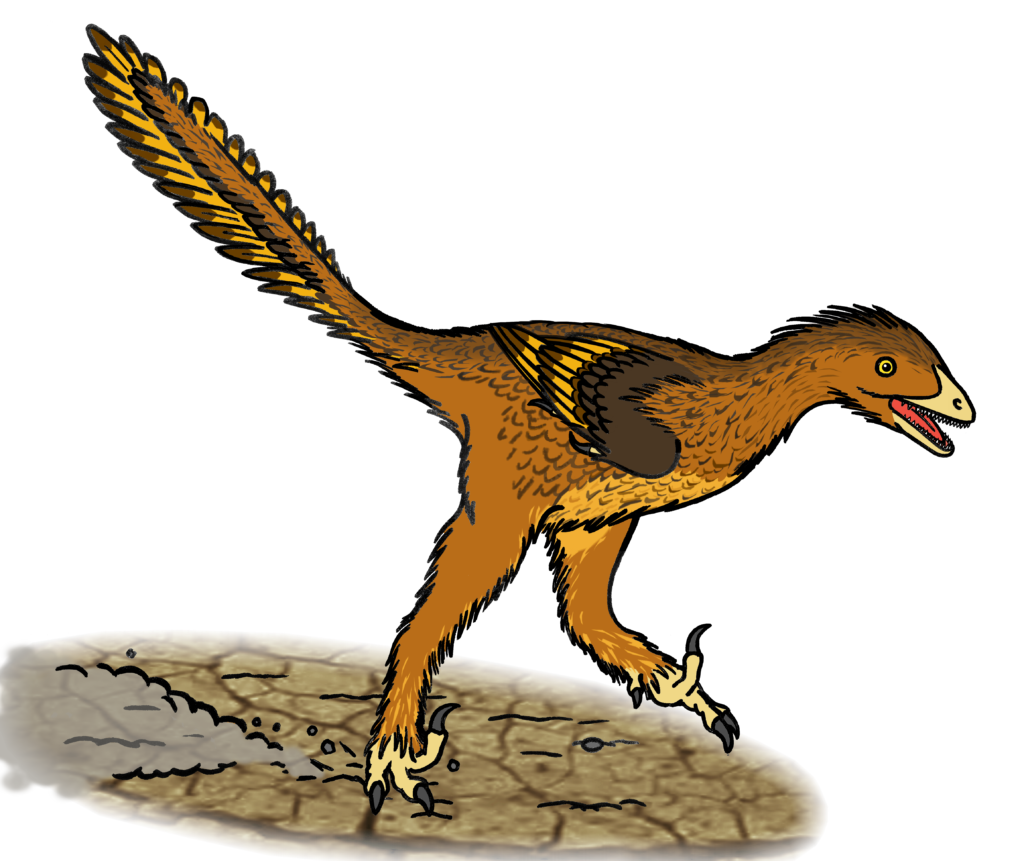
The vibrant coloration and iridescent plumage of Anchiornis strongly suggest these features played a role in social display. Similar to modern birds that use colorful feathers to attract mates or establish dominance, Anchiornis likely engaged in visual communication with members of its species. The contrasting pattern of black body feathers with white-tipped wings and a reddish crown would have created a striking appearance, particularly when catching sunlight through the forest canopy. The iridescent quality of certain feathers would have enhanced this effect, creating dynamic color shifts as the animal moved. Some paleontologists hypothesize that Anchiornis may have performed display behaviors similar to those seen in modern birds, possibly including ritualized movements that showcased its feathered limbs. While direct evidence of social structure is limited, the elaborate plumage patterns suggest Anchiornis lived in groups where visual recognition and communication were important.
Differences from Modern Birds

Despite its feathered appearance, Anchiornis differed from modern birds in several significant ways. Unlike today’s birds, it retained many dinosaurian features, including a long bony tail, teeth instead of a beak, and three-fingered hands with claws at the end of its wings. Anchiornis lacked a fully developed furcula (wishbone) and the keeled sternum that provides attachment points for the powerful flight muscles of modern birds. Its feathers, while structurally similar to those of modern birds, were arranged differently, particularly on the legs and tail. The brain of Anchiornis, based on endocasts derived from CT scans, was intermediate between reptilian and avian forms, with enlarged visual processing areas but without the fully developed flight-control regions found in modern birds. These differences highlight Anchiornis’s transitional nature and demonstrate that the evolution of birds involved numerous incremental changes rather than a sudden transformation.
Research Techniques and Fossil Analysis
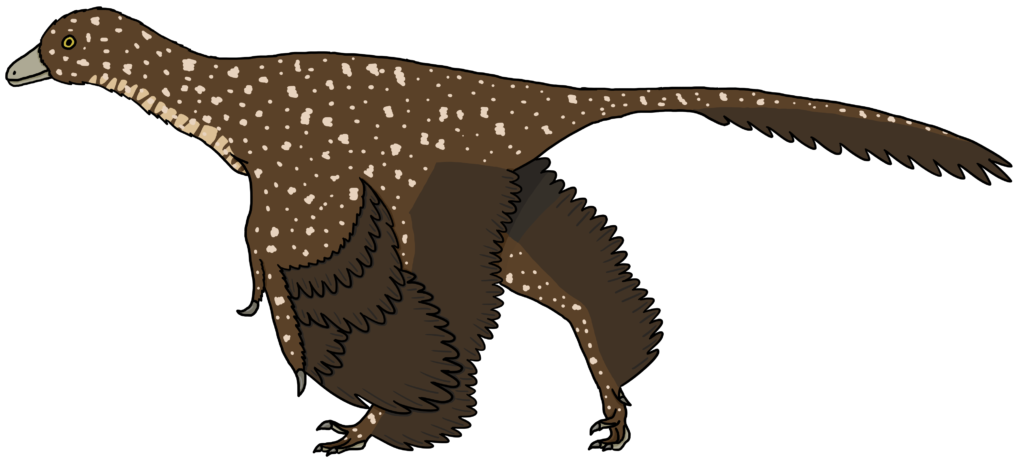
The study of Anchiornis has benefited from cutting-edge scientific techniques that were unavailable to earlier generations of paleontologists. Scanning electron microscopy has allowed researchers to examine the microscopic structure of preserved feathers, identifying melanosomes that indicate original coloration. Laser-stimulated fluorescence imaging has revealed soft tissue details not visible under normal light, including the outlines of muscles and other structures that rarely fossilize. CT scanning has been used to examine the internal anatomy of specimens without damaging them, providing insights into brain structure, sensory capabilities, and skeletal development. Chemical analysis of fossil tissues has identified protein remnants that help clarify evolutionary relationships and confirm the link between dinosaurs and birds. These advanced techniques have transformed Anchiornis from a simple fossil specimen into one of the most thoroughly understood dinosaur species, serving as a model for how comprehensive analysis can provide a remarkably detailed picture of extinct animals.
Significance for Understanding Bird Origins
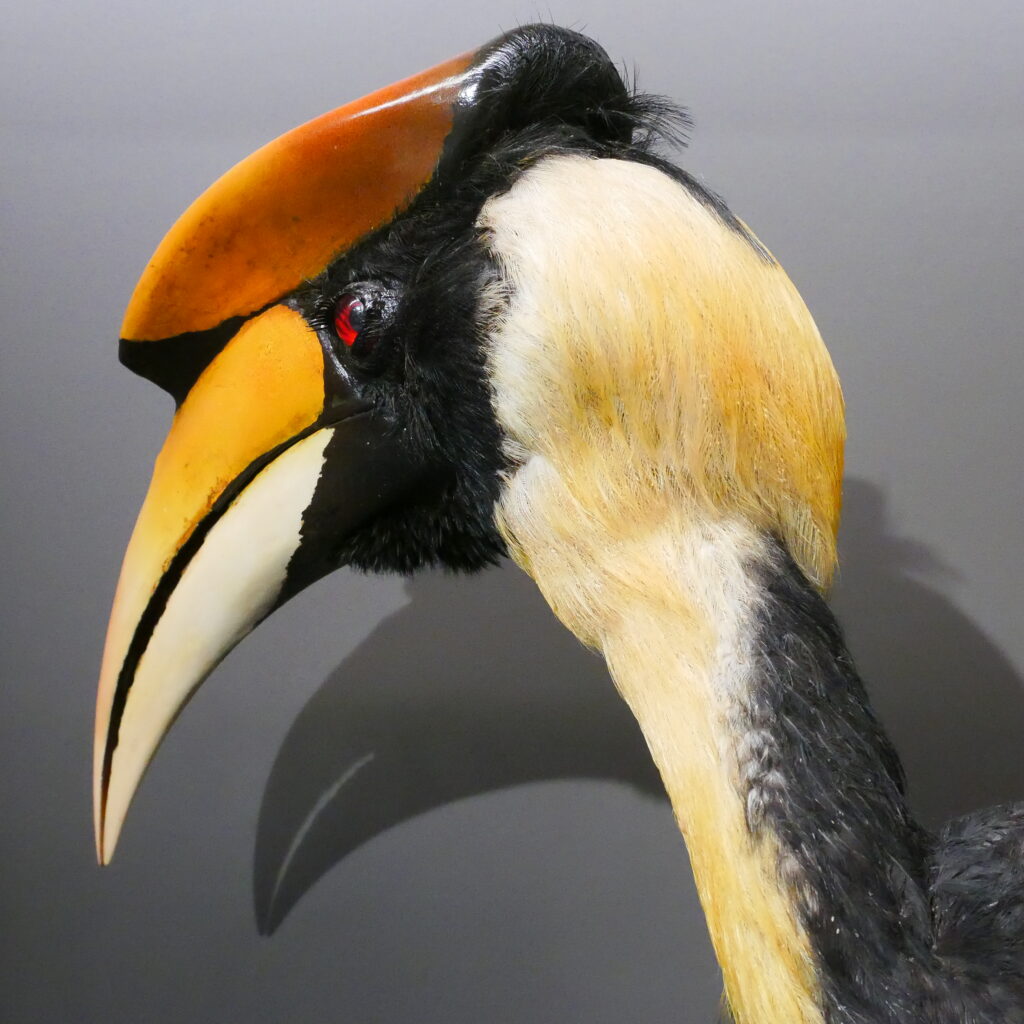
Anchiornis is one of the most important fossils in the ongoing debate about bird origins and the dinosaur-bird transition. By demonstrating that many features once thought to be unique to birds—including complex feather types and colorful plumage—were present in dinosaurs predating Archaeopteryx, Anchiornis has helped solidify the evolutionary link between dinosaurs and birds. Its chronological position in the fossil record, combined with its mosaic of features, demonstrates that the evolution of avian characteristics was a gradual process where different traits appeared at different times for various functions. The presence of flight feathers in a creature that likely couldn’t fly effectively supports the hypothesis that feathers initially evolved for purposes other than aerial locomotion, such as display, insulation, or balance while running. Anchiornis thus represents a crucial “missing link” that helps paleontologists trace the step-by-step transformation from ground-dwelling theropod dinosaurs to the birds that fill our skies today.
Legacy and Popular Culture
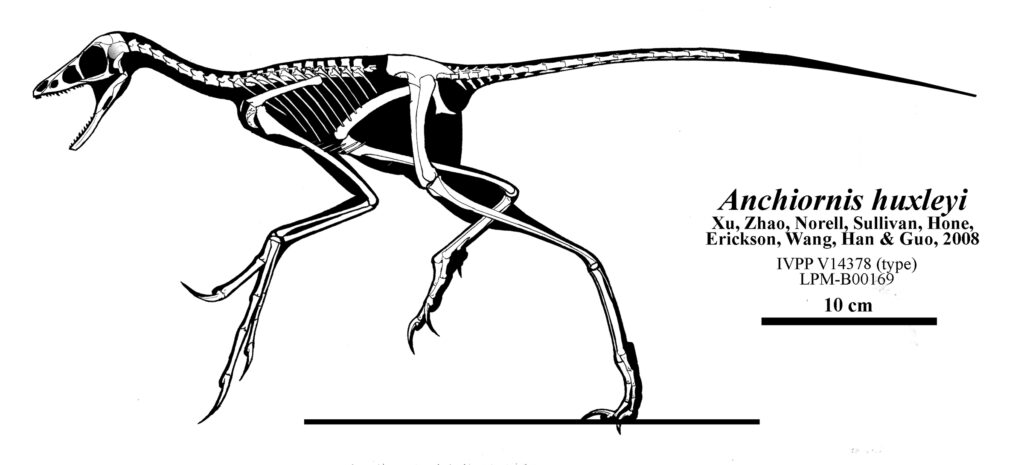
Since its scientific description in 2009, Anchiornis has become one of the most iconic representations of feathered dinosaurs in popular culture. Its striking appearance—particularly the scientifically accurate color pattern with rainbow iridescence—has made it a favorite subject for paleoartists and museum displays seeking to showcase the current understanding of dinosaur appearance. Anchiornis has been featured in numerous documentaries about dinosaur evolution and the origins of birds, helping to reshape public perception of what dinosaurs looked like. Museum exhibitions worldwide now include vibrant reconstructions of Anchiornis, often positioned as a centerpiece in displays about the dinosaur-bird connection. These colorful, feathered representations stand in stark contrast to the scaly dinosaurs that dominated popular imagery for most of the 20th century, visually demonstrating how dramatically our understanding of dinosaur appearance and biology has changed in recent decades.
Conclusion
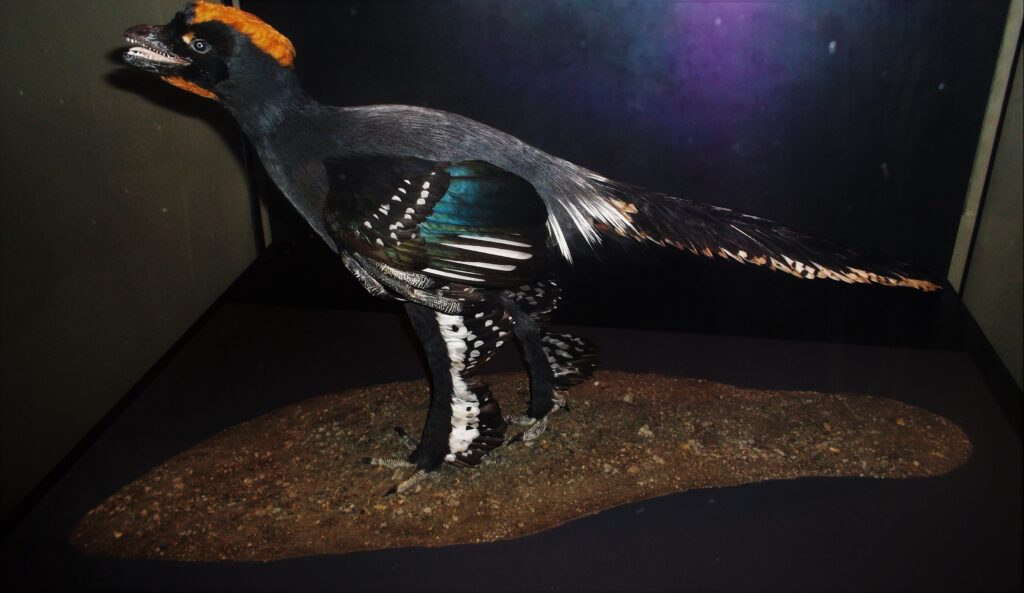
Anchiornis huxleyi represents far more than just another dinosaur species in the fossil record. This tiny, iridescent creature provides a crucial glimpse into a transformative period in evolutionary history when the features that would eventually define birds were emerging in dinosaur ancestors. Its exceptionally preserved fossils have allowed scientists to reconstruct its appearance and lifestyle with unprecedented detail, from its spectacular rainbow-hued plumage to its four-winged body plan. As research techniques continue to advance, Anchiornis will likely reveal even more secrets about the dinosaur-bird transition, further blurring the once-clear line between these groups. In many ways, this diminutive dinosaur with its shimmering feathers embodies the ongoing revolution in paleontology—a field that continues to replace outdated perceptions with a more vibrant, nuanced, and scientifically rigorous understanding of prehistoric life.

